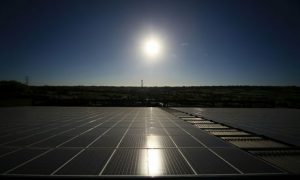Commercial Solar Finance NSW
Solar Energy Optimization: Financing Your Solar System

Introduction
As the world shifts toward sustainable energy sources, solar power has emerged as a key player in reducing greenhouse gas emissions and promoting a cleaner environment. Installing solar panels at home not only contributes to global efforts but also offers significant financial benefits. In this blog, we’ll explore various ways to finance your solar system and optimize its performance.
1. Green Loans
Green loans are unsecured personal loans specifically designed for environmentally friendly purposes. These loans allow you to borrow money to purchase solar panels, batteries, and other clean energy products. Key features include:
- Lower Interest Rates: Green loans typically offer lower interest rates compared to regular personal loans.
- Flexible Terms: You can choose a convenient loan term (usually between one to five years).
- Eligibility Requirements: Some lenders may have stringent eligibility criteria, including a good credit score.
- Products Covered: Solar panels, hot water systems, energy-efficient appliances, and more.
2. Interest-Free Solar Loans
While interest-free solar loans sound appealing, they often come with a catch. Although there’s no interest, suppliers may increase the system price to cover merchant fees. Consider the following:
- Higher Initial Cost: Interest-free loans can make the overall cost of your solar system higher.
- Approval Ratings: These loans are accessible even if you have poor credit.
- Shorter Terms: Interest-free loans usually have shorter terms, resulting in higher monthly repayments.
3. Personal Loans and Home Equity
- Personal Loans: You can apply for an unsecured personal loan to finance your solar panels. These loans are versatile and don’t require collateral.
- Home Equity Loans: Use the equity in your home (the difference between your property’s value and outstanding mortgage) to borrow money. You can add solar costs to your mortgage or refinance your home loan.
4. Solar Leasing
- Third-Party Ownership: With solar leasing, a third party owns and maintains the solar system on your property.
- Benefits: No upfront costs, maintenance responsibilities, or ownership hassles.
- Drawbacks: You won’t own the system, and long-term savings may be limited.
5. Solar Power Purchase Agreements (PPAs)
- PPAs: Under a PPA, a solar provider installs and maintains the system on your property. You agree to purchase the generated electricity at a predetermined rate.
- Advantages: No upfront costs, predictable energy prices, and professional maintenance.
- Considerations: Contract terms, rate escalations, and system ownership.
Additional Financial Benefits Once You Go Solar!
Solar Rebate
The Small-scale Renewable Energy Scheme (SRES) creates a financial incentive for individuals and small businesses who install small-scale renewable energy systems such as solar panel systems. It is done by creating small-scale technology certificates. Renewable Energy Target liable entities are legally obligated to buy these certificates and surrender to the Clean Energy Regulator every quarter.
Small-scale technology certificates (STCs) are provided ‘upfront for the systems’ expected power generation over 15 years or, from 2017, from the installation year until 2030, when the scheme ends. Electricity generated from non-renewable sources is replaced by renewable electricity. Usually, homeowners who purchase these systems assign this right to create certificates for an agent to get payback for a lower purchase price. The extent of this benefit is different across the country depending on the solar energy you produce.
Once the installation of an eligible solar panel system is done and the calculation of the amount of electricity your system produces or replaces (that is, electricity from non-renewable sources), Small-scale technology certificates can be created.
Under the Small-scale Renewable Energy Scheme, all the documents like signed compliance statements, forms, certificates, reports, photos, and invoices must be retained for a minimum period of five years after the Small-scale technology certificates are created.
Specific documentation should be provided while claiming STCs by the registered agents, who have the right to create small-scale technology certificates (STCs). The agent is assigned to them by system owners. The Clean Energy Regulator can request these documents at any time to prove that the system was eligible for STCs.
Anyone living anywhere in Australia can receive STCs for solar panel installations up to 100kW.
One does not need to apply for STCs (Small-scale Technology Certificates) as your solar panel retailer itself generally uses them as a point-of-sale discount.
Each STC has a dollar value redeemed for you by your solar panel retailer in a government-regulated market. Then the value of your STCs is reduced from the cost of your system by your solar retailer.
There is no such limit for the number of properties you can get STCs for. You can get STCs for your primary residence, holiday home, small business, and rental property.
This scheme is gradually being eliminated, reducing the value of STCs occurring on 1 January each year until 2030. The scheme will come to an end on 31 December 2030.
How the STC process works with AYKA Solar
When you select AYKA Solar as your solar panel system supplier and installer, we simplify the process.
Submit your contact details here – solarwind.net,au/contact-us
Our Solar Expert team will call & email you a free quote based on the information you provide (Electricity bill), including the amount of the discount you get for your STCs.
Accept the quote and pay the deposit.
Our Solar panel Installation team will install your new solar system.
Conclusion
Investing in solar energy pays off in the long run. Whether you choose green loans, interest-free options, or explore personal loans, the goal remains the same: reduce costs, minimize emissions, and optimize your solar system’s performance. So, go ahead—harness the power of the sun and contribute to a greener future! ????????
References: